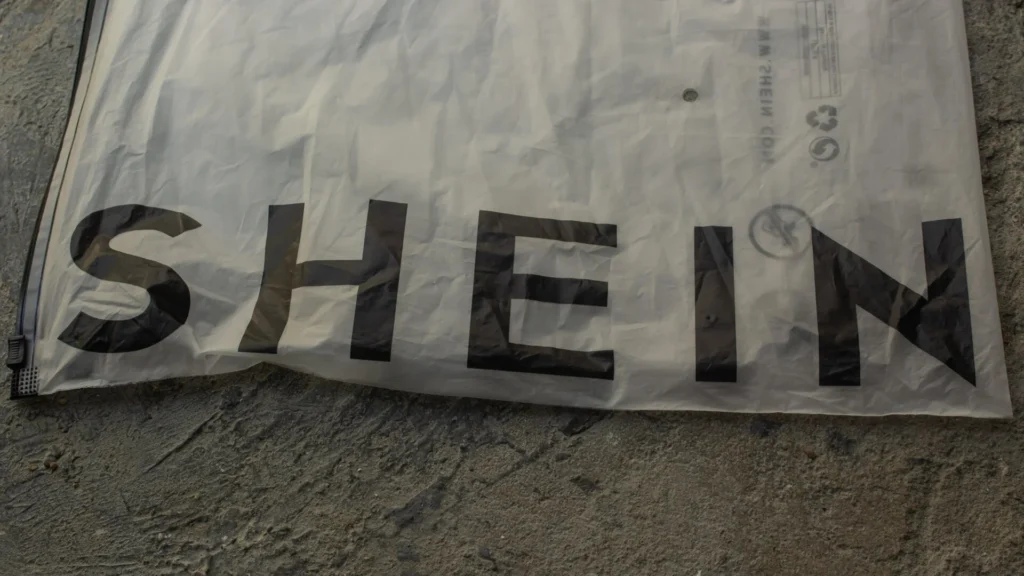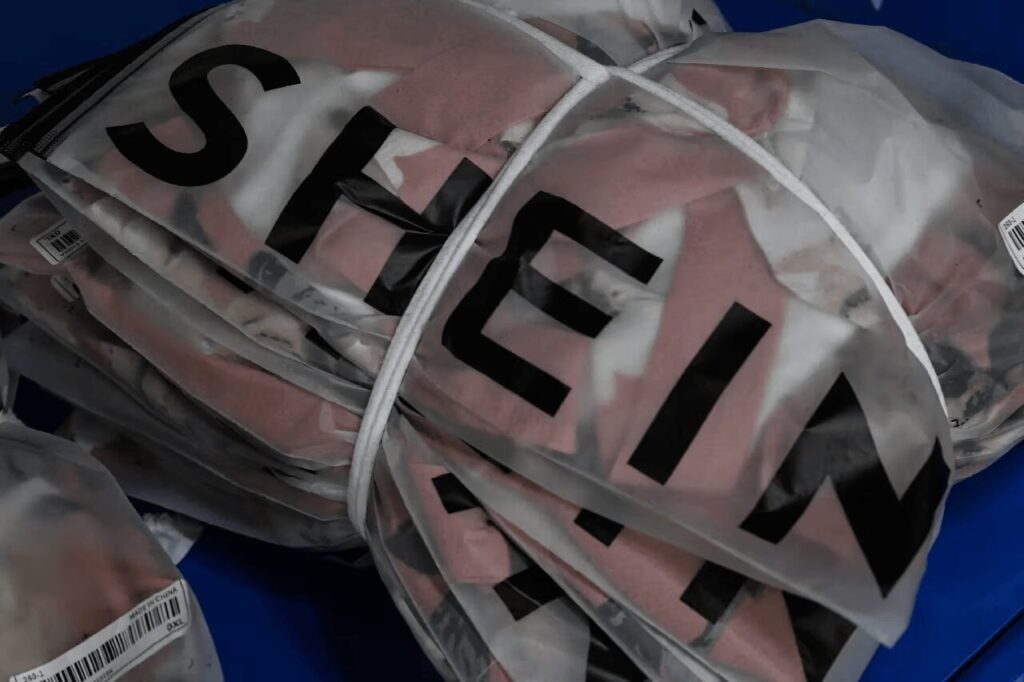Shein factory shutdowns in China have shocked the global fashion world. Once praised for its fast production and low prices, Shein is now struggling with serious supply chain problems. The cause? New tariffs introduced by former U.S. President Donald Trump. These factory closures are not just affecting Shein—they’re sending a warning to the entire fashion industry.
What Triggered the Shutdowns?
The main reason behind these closures is a new set of trade tariffs. Trump has proposed ending what’s called the “de minimis” rule. This rule allowed imported goods worth less than $800 to enter the U.S. without paying duties or taxes.
For companies like Shein, this rule was a lifeline. Most of their packages to the U.S. were small and low in value, which meant they avoided costly import taxes. This kept prices low for customers.
But now, with the rule under threat, Shein’s business model is taking a hit. The sudden change has made it more expensive to export clothes from China to the U.S. The result? Many garment factories that supply Shein in China have been forced to shut down.
Garment Workers in Limbo
The impact has been immediate and harsh for workers in China. Several small to mid-sized garment factories, especially in provinces like Guangdong, have already closed their doors. These factories were part of Shein’s vast supply network.
Some workers have lost jobs overnight. Others are being told to wait while their employers “adjust to the situation.” But there’s uncertainty everywhere.
For thousands of Chinese workers, these shutdowns don’t just mean lost wages—they mean lost stability. Many workers are migrants who depend on these jobs to support their families.
Shein’s Response: Look to Vietnam
Shein isn’t staying silent. The company is reportedly urging its suppliers to move their operations to other countries, especially Vietnam.

Vietnam has become a rising hub for textile and garment manufacturing in recent years. It offers cheaper labor, fewer regulatory hurdles, and—most importantly—a safer trade route into the U.S., as it’s not facing the same tariffs as China.
By moving production there, Shein hopes to dodge the worst effects of Trump’s new trade policies. It’s a smart move in theory, but the shift won’t be easy.
Challenges of Moving Production
Relocating garment production isn’t like flipping a switch. Even though Vietnam offers an attractive option, Shein’s suppliers will need to overcome several hurdles:
- Setting up new infrastructure: Starting from scratch in a new country is time-consuming and costly.
- Training a new workforce: Skilled workers don’t appear overnight. Training takes time.
- Regulatory issues: Every country has its own rules around labor, wages, and factory safety.
- Shipping logistics: Shein’s tight delivery model relies on speed. New shipping routes may affect their ability to deliver quickly to U.S. customers.
Some suppliers might not be able to make the move at all. Smaller factories with fewer resources are at risk of going out of business.
Fast Fashion at a Crossroads
The Shein factory shutdowns are a wake-up call for the entire fashion industry. Fast fashion, which relies on ultra-cheap labor and rapid production, is under pressure like never before.
The business model works best when global trade flows smoothly. But when political decisions—like tariffs—disrupt those flows, even giants like Shein can stumble.
Other fast-fashion companies such as Temu, Fashion Nova, and Boohoo are likely watching closely. If the U.S. cracks down on the de minimis rule for all imports, not just Chinese ones, many brands may have to rethink how and where they manufacture clothes.
Trump’s Trade Strategy: A Closer Look
Trump’s new tariff proposal isn’t just targeting Shein. It’s part of a broader strategy aimed at protecting American businesses.
He believes that foreign companies are taking advantage of free trade rules to undercut U.S. manufacturers. The idea behind ending the de minimis exemption is to push more companies to build or source their products in America or friendly nations.
Whether that goal will be achieved is unclear. What is clear is that global brands that rely on cheap foreign labor and free trade routes will face major disruptions.

What It Means for U.S. Shoppers
The shutdowns and supply issues may soon affect everyday shoppers. Americans love Shein for its trendy clothes and rock-bottom prices. But if the company struggles to find new suppliers or faces more tariffs, it could raise prices or slow down deliveries.
Customers might start noticing:
- Longer shipping times
- Fewer new styles
- Higher prices
- Limited availability of popular products
This could push buyers to look at other brands—or force Shein to invest more in local distribution centers or warehouses in countries like Mexico or Canada.
Environmental Concerns Re-Ignited
The spotlight is also returning to the environmental cost of fast fashion. Shein has long faced criticism for its role in overproduction and textile waste.
Now, as factories shut down and suppliers relocate, there’s a chance for the company—and the industry—to reassess its approach. Can fast fashion become more sustainable? Or will companies just shift the problem from one country to another?
Relocating factories may help Shein avoid tariffs, but it doesn’t solve the deeper issues tied to pollution, worker rights, and product waste.
Can Shein Survive the Shake-Up?
Despite the challenges, Shein is not down for the count. The company has grown incredibly fast and has shown a strong ability to adapt.
Here’s what Shein might do to survive:
- Speed up expansion into countries like Mexico and India
- Work with third-party sellers in the U.S. to reduce direct shipping
- Build warehouses in low-tariff regions
- Raise prices slightly to cover added costs
- Invest in digital-only fashion collections to reduce waste
If Shein can pivot quickly and manage its logistics, it may emerge even stronger. But it will have to act fast—and smart.
What Comes Next?
The future of fast fashion depends on what happens next in the trade war between the U.S. and China. If more tariffs are introduced, we could see other major brands following Shein’s path—shutting down factories and shifting production overseas.
Consumers may have to get used to higher prices and slower shipping. Meanwhile, smaller suppliers and factory workers—especially in China—could face even more job losses.
The Shein factory shutdowns are more than just a business issue. They reflect how closely our clothes, politics, and global economy are tied together.
Final Thoughts
Shein factory shutdowns are a direct result of a changing global trade landscape. What once seemed like an unstoppable fast-fashion machine is now facing some of its toughest tests.
For shoppers, this means possible changes in price and delivery. For workers, it means uncertainty. And for the industry, it’s a call to innovate, adapt, and maybe even rethink how fashion is made and sold.
As Shein looks beyond China to survive, one thing is clear: the fast fashion world will never be quite the same again.
Read Next – The True Cost of Being Polite to ChatGPT: OpenAI Faces Huge Bills






